Caryn

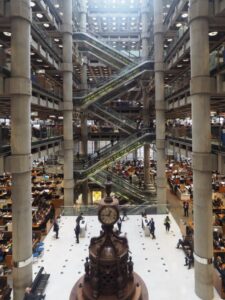 As an insurance agent, I have dealt with Lloyd’s of London many times. They were the company that could handle whatever needed to be handled, when no one else could. They were a no-nonsense company, and that always made me think of a traditional company…if not a stuffy old company filled with old men who almost look down on the people that end up needing insurance from them. Lloyd’s of London is an insurance and reinsurance market located in London, England. Unlike most of its competitors in the industry, it is not an insurance company. Lloyd’s is a corporate body governed by the Lloyd’s Act 1871 and subsequent Acts of Parliament. “Lloyd’s operates as a partially mutualized marketplace within which multiple financial backers, grouped in syndicates, come together to pool and spread risk.”
As an insurance agent, I have dealt with Lloyd’s of London many times. They were the company that could handle whatever needed to be handled, when no one else could. They were a no-nonsense company, and that always made me think of a traditional company…if not a stuffy old company filled with old men who almost look down on the people that end up needing insurance from them. Lloyd’s of London is an insurance and reinsurance market located in London, England. Unlike most of its competitors in the industry, it is not an insurance company. Lloyd’s is a corporate body governed by the Lloyd’s Act 1871 and subsequent Acts of Parliament. “Lloyd’s operates as a partially mutualized marketplace within which multiple financial backers, grouped in syndicates, come together to pool and spread risk.”
While Lloyd’s of London is a traditional company, the building that houses them is…a little strange. The Lloyd’s building, which is also known as the Inside-Out Building. It is located on the former site of East India House in Lime Street. That is in London’s main financial district, the City of London. The building is an example of radical Bowellism architecture in which the services for the building, such as ducts and elevators, are located on the exterior to maximize space in the interior. Whatever they were trying to accomplish, the result is a very strange building. The building is as unique inside as it is outside.
The building was completed in 1986, and in 2011, twenty-five years after its completion the building received Grade I Listing, which is “of exceptional interest and may also have been judged to be of significant national importance.” The Lloyd’s building is the youngest structure ever to obtain Grade I Listing. It is said by Historic England to be “universally recognized as one of the key buildings of the modern epoch.” However, its innovation 
 of having key service pipes and such routed outside the walls has led to very expensive maintenance costs due to their exposure to the elements. I suppose that makes sense, maybe more sense that the original structure of the building, which while interesting, may not be practical. In fact, Lloyd’s is actually considering a move to a more traditional building. That is almost sad, when you think about it.
of having key service pipes and such routed outside the walls has led to very expensive maintenance costs due to their exposure to the elements. I suppose that makes sense, maybe more sense that the original structure of the building, which while interesting, may not be practical. In fact, Lloyd’s is actually considering a move to a more traditional building. That is almost sad, when you think about it.

 After an extra-long wait, my newest great grandson, Jusin King Todd Petersen has finally arrived. Justin went past his due date, but babies do have their own schedules. His parents, Athena Salazar and Josh Petersen have been so excited about welcoming their little boy, and everything seemed to be pointing to an early birth, but someone forgot to tell Justin that. Nevertheless, after an extra-long wait, Justin arrived on October 14, 2022, at 8:20am, weighing 7 pounds 5 ounces and measuring 19¾ inches long. He has dark hair, ten fingers and ten toes, and he is just perfect in every way. He is Athena and Josh’s first child, and they couldn’t be happier.
After an extra-long wait, my newest great grandson, Jusin King Todd Petersen has finally arrived. Justin went past his due date, but babies do have their own schedules. His parents, Athena Salazar and Josh Petersen have been so excited about welcoming their little boy, and everything seemed to be pointing to an early birth, but someone forgot to tell Justin that. Nevertheless, after an extra-long wait, Justin arrived on October 14, 2022, at 8:20am, weighing 7 pounds 5 ounces and measuring 19¾ inches long. He has dark hair, ten fingers and ten toes, and he is just perfect in every way. He is Athena and Josh’s first child, and they couldn’t be happier.
Justin is a sweet little baby, who calms immediately to his parents’ voices, and snuggles right up to them, as if to say, “Now, I know where I am.” That could be what he is thinking too, because being born puts a guy in a very different place than when he was living in his mommy’s tummy. It can seem a little too big and wide open out there. Nevertheless, Justin seems to be handling the transition very well. He’s just hanging out and chillin’ in the hospital room. So far, he just hanging out with his parents, grandparents, and the doctors and nurses, but soon he will be home, and there will be lots of new people to meet. If Justin thinks being out in the world was a shock, wait until he starts meeting new people. It’s a big world out there, baby boy!!
I am so excited for the next phase of Athena and Josh’s lives. They both love kids, and that means that Justin will not only have siblings one day, but he will have a wonderful life, filled with cousins and close family ties. Athena and Josh are very family oriented. They love lots of family time, and Justin will have lots of grandparent 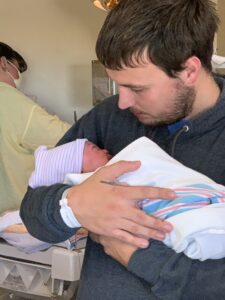
 time too. Athena comes from a larger family while Josh comes from a smaller family, so there are two different views of family life. Nevertheless, they seem to be combining the two views very well, and Justin will have the advantages of both worlds. Having nieces and nephews makes Athena and Josh pretty much experts at the whole kid thing, and so they are pretty comfortable with a new baby. Nevertheless, they are first-time parents, and there will be initiations…some of which they have already experienced, like how very different changing a diaper is with a boy than with a girl. Soon though, they will be experts at Justin and his ways. I can’t wait to watch them as their little family grows. Welcome to the world, Justin King Todd Petersen!! We love you very much!!
time too. Athena comes from a larger family while Josh comes from a smaller family, so there are two different views of family life. Nevertheless, they seem to be combining the two views very well, and Justin will have the advantages of both worlds. Having nieces and nephews makes Athena and Josh pretty much experts at the whole kid thing, and so they are pretty comfortable with a new baby. Nevertheless, they are first-time parents, and there will be initiations…some of which they have already experienced, like how very different changing a diaper is with a boy than with a girl. Soon though, they will be experts at Justin and his ways. I can’t wait to watch them as their little family grows. Welcome to the world, Justin King Todd Petersen!! We love you very much!!
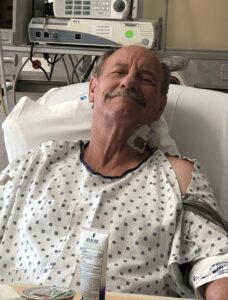 It’s hard to wrap my head around the fact that four years ago today, my husband, Bob Schulenberg had a heart attack in the Walmart parking lot. It was the Widowmaker…one of the deadliest types of heart attack. MY memory of that event, however, is as vivid today as if I were standing there watching it happen all over again. That day could have changed my life forever and taken his life from him…but it didn’t. My husband is still here because there are heroes among us!! They are everyday people who see a deadly situation, and don’t just turn their backs. They take action. I didn’t see the attack, because Bob had gone to put the shopping cart in the rack. I was checking my phone when a man I don’t know to that day knocked on my window and asked if I “knew this man?” I immediately realized that Bob had taken too long to get into the car.
It’s hard to wrap my head around the fact that four years ago today, my husband, Bob Schulenberg had a heart attack in the Walmart parking lot. It was the Widowmaker…one of the deadliest types of heart attack. MY memory of that event, however, is as vivid today as if I were standing there watching it happen all over again. That day could have changed my life forever and taken his life from him…but it didn’t. My husband is still here because there are heroes among us!! They are everyday people who see a deadly situation, and don’t just turn their backs. They take action. I didn’t see the attack, because Bob had gone to put the shopping cart in the rack. I was checking my phone when a man I don’t know to that day knocked on my window and asked if I “knew this man?” I immediately realized that Bob had taken too long to get into the car.
I jumped out of the car and ran to the other side. There on the ground, with blood coming from his head was my husband. His eyes were open, but he was not there. I immediately thought that I had lost him. Then I came to my senses…sort of and got down beside him. I “demanded” that he wake up. Looking back now, I must have looked crazy, telling my unconscious husband to “wake up and get back to life” basically. Then I noticed someone was there, with a stethoscope!! Who carries a stethoscope in their car, and how did she know we needed her? Only an angel, sent by God to be there!! There were many angels in that parking lot that day. Some I now know, like Sean Pesicka-Taggart, the man who first came to my husband’s aid, and his girlfriend Laura Lance, who was a transport worker at Wyoming Medical Center, at that time (I’m very proud to say that she is now a Radiologic Technologist). Laura assisted the nurse, Ginger Sims who was the one to realize that it was not a fall or hit-and-run, but Bob’s heart that had stopped. She told her son to push the OnStar button and tell the ambulance where to respond. Then, Ginger took immediate action, and if she had not, I would have been a widow today. Ginger was doing CPR, and told me how to do rescue breathing, because I couldn’t think straight. Laura assisted in CPR, thankfully, because that is a hard job, and no one can do it for very long. Then just as suddenly, another nurse, who worked with Ginger saw what was going on, and stopped to help. Valya Boycheva is also a nurse at Wyoming Medical Center, and she took over CPR for Laura. Together the three of them continued CPR until the fire department and ambulance arrived. I’m not sure, but I think Sean called them. When the paramedics took over, I stood back and thought…”How will I ever know who to thank for their assistance?” So many heroes had stepped out of thin air, to give their all for my husband. Somehow, God made sure that I found out who they were, and I have been forever grateful for that too.
There were other angels there that day…prayer warriors!! These people were in the parking lot, and saw the situation, and immediately started praying…Lori DeSanti (a friend of mine from church), Chelsea Kessler (who immediately called her dad and stepmom, Page and Donna LePage…who, not knowing who they were praying for, called my boss, Jim Stengel and got him in prayer too), and Chelsea’s husband, Zack Kessler. There were probably countless other people there praying, because there were angels all over that parking lot that day. I have no doubt about that, and because of all the heroes, prayer warriors and angels there that day, my husband is health and most of all, still with me today.
To add to the incredible events of that day, it seemed only seconds before the firetrucks arrived, with a friend of Bob’s on the crew. Jerod Levin saw me and immediately came to my aid. I was standing there feeling very  small and totally lost, and he told me I could go with Bob in the ambulance, and that he would bring my car to the hospital for me!! And, when we got to the hospital…on a Sunday afternoon, all the right people, Jon Cook and Sam Cann (both of whom work in the Heart Cath Lab), just happened to be there, and they know Bob, because he had worked on their cars. From attack to full treatment took two hours…two hours!! How could that have all came together? Only God…only God!! And to this day, I give him all the praise, and I will be forever grateful for the heroes among us, who stepped up to the plate when Bob and I needed them most. They are family now, and they always will be.
small and totally lost, and he told me I could go with Bob in the ambulance, and that he would bring my car to the hospital for me!! And, when we got to the hospital…on a Sunday afternoon, all the right people, Jon Cook and Sam Cann (both of whom work in the Heart Cath Lab), just happened to be there, and they know Bob, because he had worked on their cars. From attack to full treatment took two hours…two hours!! How could that have all came together? Only God…only God!! And to this day, I give him all the praise, and I will be forever grateful for the heroes among us, who stepped up to the plate when Bob and I needed them most. They are family now, and they always will be.
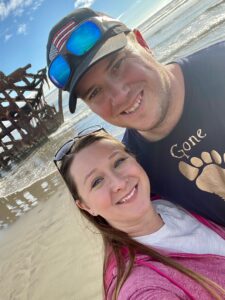
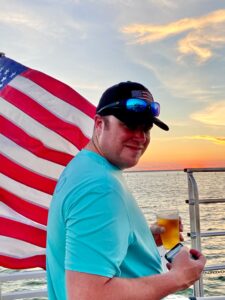 My nephew, Ryan Hadlock has had a very busy year this year. Ryan has worked at Contango Energy with his uncle, Mike Stevens. This year, Mike retired, and the company put the position up for grabs. Mike had been the Compression Foreman, and Ryan had been a Compression Operator. The logical next step for Ryan was to apply for Mike’s job, and the next logical step for the company, was to promote Ryan to that position. He already knew the job, and he had what it takes to be the Compression Foreman. So, when Mike retired on July 1st, Ryan took over, and he is really enjoying his job. Ryan has the right kind of personality to be the foreman. He is helpful and level-headed. The worst kind of foreman is one that is moody and…well, a screamer. Ryan is a calm person, as was Mike. They are both the kind of manager that everyone wants to work for. People instinctively want to please them. That kind of a working relationship makes working fun. Ryan is very happy in his new position, and it has been great for the whole family.
My nephew, Ryan Hadlock has had a very busy year this year. Ryan has worked at Contango Energy with his uncle, Mike Stevens. This year, Mike retired, and the company put the position up for grabs. Mike had been the Compression Foreman, and Ryan had been a Compression Operator. The logical next step for Ryan was to apply for Mike’s job, and the next logical step for the company, was to promote Ryan to that position. He already knew the job, and he had what it takes to be the Compression Foreman. So, when Mike retired on July 1st, Ryan took over, and he is really enjoying his job. Ryan has the right kind of personality to be the foreman. He is helpful and level-headed. The worst kind of foreman is one that is moody and…well, a screamer. Ryan is a calm person, as was Mike. They are both the kind of manager that everyone wants to work for. People instinctively want to please them. That kind of a working relationship makes working fun. Ryan is very happy in his new position, and it has been great for the whole family.
Ryan and his dad, Chris Hadlock love to fish, and this year, they have been out fishing in a way I hadn’t seen 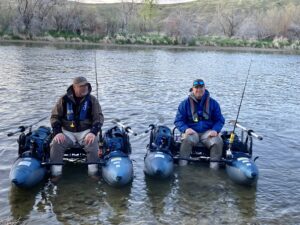 before. Of course, I’m not a fisherman, so that would explain my lack of knowledge about personal pontoon boats. They actually look kind of cool though, and maybe the fishing is easier, I don’t know. I suppose that fishing works better in deeper waters, than at the shore…although they fish from the shore too. If you are a fisherman, fishing anywhere is far better than working, so there you have it.
before. Of course, I’m not a fisherman, so that would explain my lack of knowledge about personal pontoon boats. They actually look kind of cool though, and maybe the fishing is easier, I don’t know. I suppose that fishing works better in deeper waters, than at the shore…although they fish from the shore too. If you are a fisherman, fishing anywhere is far better than working, so there you have it.
This past summer, the Hadlock families, took a family trip to Florida, and rented a beach house on the Gulf Coast for a week. They had an absolute blast. They had plenty of space, and they didn’t have any kind of a schedule to speak of, other that the mini cruise they took. They had lots of beach time, and relaxing times in the house, which was absolutely huge, by the way. They had plenty of room to spread out and do their own things, and plenty of room to be together and have fun too. It was a great trip.
They, Ryan and his family headed to the Pacific Coast for his wife, Chelsea’s grandma’s 86th birthday. What a wonderful event to get to attend. They all had a wonderful time, and I’m sure her grandma was just thrilled to 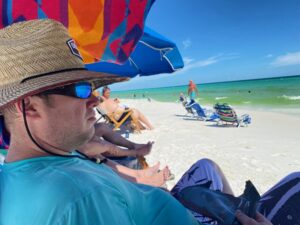
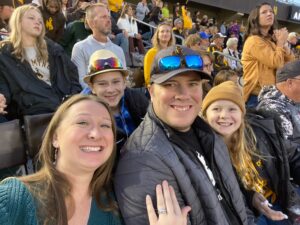 have everyone together again…and for something so wonderful and an 86th birthday party…wow!! It was a busy summer for Ryan’s family. Two coasts in one summer. As Chelsea said about their vacation…”Two coasts, one white sand and one black sand!! It was a real contrast.” I’ll bet it was, and I’m so happy they got to go. Today is Ryan’s birthday. Happy birthday Ryan!! Have a great day!! We love you!!
have everyone together again…and for something so wonderful and an 86th birthday party…wow!! It was a busy summer for Ryan’s family. Two coasts in one summer. As Chelsea said about their vacation…”Two coasts, one white sand and one black sand!! It was a real contrast.” I’ll bet it was, and I’m so happy they got to go. Today is Ryan’s birthday. Happy birthday Ryan!! Have a great day!! We love you!!
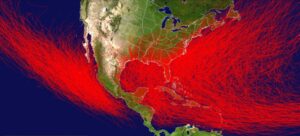 In order to support a hurricane or typhoon, an area has to have one ingredient…warm ocean temperatures, generally above 82° F. The warm water sustains hurricanes and allows them to grow stronger. On the other hand, cooler sea surface temperatures will cause hurricanes to weaken, and in most cases, die out. The biggest difference between the East and West coasts of the United States are the sea surface temperatures. Because the Gulf Stream flows northwards along the East Coast, while sea surface temperatures along the West Coast are significantly cooler, the West Coast cannot usually sustain hurricanes. Of course, that doesn’t mean that it is impossible, as is shown in the 1962 Columbus Day Storm…also called the Big Blow and in Canada, Typhoon Freda.
In order to support a hurricane or typhoon, an area has to have one ingredient…warm ocean temperatures, generally above 82° F. The warm water sustains hurricanes and allows them to grow stronger. On the other hand, cooler sea surface temperatures will cause hurricanes to weaken, and in most cases, die out. The biggest difference between the East and West coasts of the United States are the sea surface temperatures. Because the Gulf Stream flows northwards along the East Coast, while sea surface temperatures along the West Coast are significantly cooler, the West Coast cannot usually sustain hurricanes. Of course, that doesn’t mean that it is impossible, as is shown in the 1962 Columbus Day Storm…also called the Big Blow and in Canada, Typhoon Freda.
The Columbus Day Storm was a Pacific Northwest windstorm that struck the West Coast of Canada and the Pacific Northwest coast of the United States on October 12, 1962. Starting out as a tropical disturbance over the Northwest Pacific on September 28th, the storm was the twenty-eighth tropical depression, the twenty-third tropical storm, and the eighteenth typhoon of the 1962 Pacific typhoon season. The system strengthened on October 3rd and became a tropical storm. At that time, it was given the name Freda, but later that day it became a typhoon as it moved northeastward. Before long the storm intensified, reaching its peak as a Category 3-equivalent typhoon on October 5th, with maximum 1-minute sustained winds of 115 mph and a minimum central pressure of 948 millibars. The storm maintained its intensity for another day, and then gradually weakened on October 6th. By October 9th, Freda had weakened into a tropical storm, and it looked 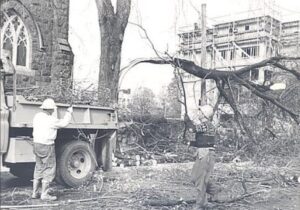
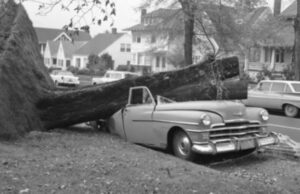 like the Pacific Northwest would dodge a bullet. Then Freda transitioned into an extratropical cyclone on October 10th. Freda turned eastward and accelerated across the North Pacific on October 11th, and finally made before striking the Pacific Northwest the next day. On October 13th, the cyclone made landfall on Washington and Vancouver Island, and then curved northwestward. After ripping through the west coast of the Washington and Canada, the system moved inland in Canada and weakened. By October 17th, it was absorbed by another developing storm to the south, and the event was over.
like the Pacific Northwest would dodge a bullet. Then Freda transitioned into an extratropical cyclone on October 10th. Freda turned eastward and accelerated across the North Pacific on October 11th, and finally made before striking the Pacific Northwest the next day. On October 13th, the cyclone made landfall on Washington and Vancouver Island, and then curved northwestward. After ripping through the west coast of the Washington and Canada, the system moved inland in Canada and weakened. By October 17th, it was absorbed by another developing storm to the south, and the event was over.
Nevertheless, the Columbus Day Storm of 1962 is considered to be the benchmark of extratropical windstorms to this day. As storm ranking goes, the Columbus Day Storm is listed as being among the most intense to strike the region since at least 1948, and quite likely since the January 9, 1880 “Great Gale” and snowstorm. With respect to wind velocity, the storm is also considered a contender for the title of the most powerful extratropical cyclone recorded in the United States in the 20th century. Even the March 1993 “Storm of the Century” and the “1991 Halloween Nor’easter” (“The Perfect Storm”) were no match. The system that drove the Columbus Day Storm brought strong winds to the Pacific Northwest and southwest Canada, was linked to 46 fatalities in the northwest and Northern California as a result of heavy rains and mudslides.
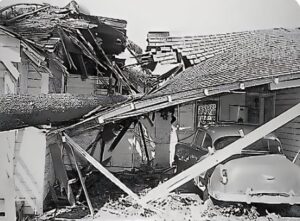
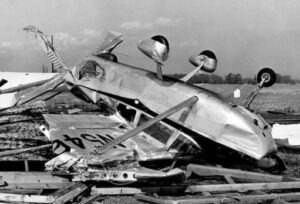
Normally, the storms that originate in the Pacific tend to weaken and die out as they reach the colder waters there. most don’t even recurve into the west coast after the leave the warmer gulf waters and head across Mexico. That is what made the Columbus Day storm so unusual for the area in which it took place.

 When I first met my nephew, Riley Birky, he was a little boy…just ten years old. At that time, his mom, Rachel Schulenberg was just dating my brother-in-law, Ron Schulenberg. Riley officially joined our family when his mom and now stepdad got married on June 12, 2010. They became a blended family that day. Losing his mom to a stroke in January of 2021, was probably the hardest time in Riley’s life, and in the lives of his family. Riley is doing his best to be there for his family, and to make his mom proud of the man he has become.
When I first met my nephew, Riley Birky, he was a little boy…just ten years old. At that time, his mom, Rachel Schulenberg was just dating my brother-in-law, Ron Schulenberg. Riley officially joined our family when his mom and now stepdad got married on June 12, 2010. They became a blended family that day. Losing his mom to a stroke in January of 2021, was probably the hardest time in Riley’s life, and in the lives of his family. Riley is doing his best to be there for his family, and to make his mom proud of the man he has become.
Fast forward to the present day, and you will find that Riley is now a stepdad to his fiancée Sierah Martin’s son, Jace and a dad to their son, Ryder. Theirs is also a blended family with much love to go around. They started dating two and a half years ago, when Jace was about ten months old, but they have known each other for seven years now. Riley took to Jace as quickly and easily as he did to Sierah. They are best buddies, and I’m quite sure Jace thinks of Riley as his dad. I know Riley’s mom would be very proud of him, and she would absolutely love his family.
Riley is a hardworking man. Much of his working career has been in construction and maintenance. Growing up helping his grandparents with their rentals taught him the skills that would take him into the next chapter of his life. Riley isn’t afraid of hard work, and his main goal in life is to provide for his little family in the best way possible. In that, he has very much succeeded. Riley and his sweet little are very happy in the home they have made together. Now, with the joy of adding little Ryder, their family is complete.
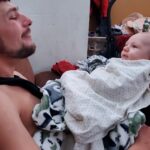

Riley may be young, just 22 years old, but he has proven himself to be a good man, and the man that Sierah was looking for and needed in her life. Together, they will make a good home and life for their children, and I believe they will live happily ever after. They are focused on their family, and they are both going in the same direction. They both love to travel and have had a good time in their little trips over the past couple of years. Today is Riley’s 22nd birthday. Happy birthday Riley!! Have a great day!! We love you!!

 My nephew, Steve Moore has had an interesting year and a half. March of 2021 found Steve in a position that no active person ever wants to find themselves…with an injured hand. For Steve this was especially bad, because he likes to do so many projects with his hands, and to suddenly find himself sidelined was devastating. Nevertheless, Steve turned his attention to doing whatever was necessary to find his way back to being able to use his hand again. Really, it’s a good thing that occupational therapy is time consuming, because occupational therapy is a lot of work, and if you want to get back to full use of your hands, you have to work hard and commit to the program. Steve did that and now he’s back.
My nephew, Steve Moore has had an interesting year and a half. March of 2021 found Steve in a position that no active person ever wants to find themselves…with an injured hand. For Steve this was especially bad, because he likes to do so many projects with his hands, and to suddenly find himself sidelined was devastating. Nevertheless, Steve turned his attention to doing whatever was necessary to find his way back to being able to use his hand again. Really, it’s a good thing that occupational therapy is time consuming, because occupational therapy is a lot of work, and if you want to get back to full use of your hands, you have to work hard and commit to the program. Steve did that and now he’s back.
While Steve was unable to do the wood for his father-in-law, LJ Cook last summer, he has been able to get back at it this year. The vibrations from the saw really gave him a lot of trouble last year, but this year has been much better. He has built up the strength to almost 100%, and while the vibrations still bother him, it’s not enough to not run the saw. I’m sure that LJ is happy about that too. Getting and cutting up wood is a big job, and every hand is a big help.
Steve loves doing projects around the home he and his wife, my niece, Machelle Moore share. Earlier this 

 spring he did some work on the front of the house. This has been an ongoing project. The cement work was done about 5 years ago, and just they then had to wait to do anymore digging so the cement was well cured. They then had to move about 16 sprinklers, before they hand dug the front and side part of the cement area. They didn’t want to take a chance on cracking the cement by using equipment for the dig, so they did it all by hand. The plan was to move the rock out to the sidewalk all along, but it’s a big job, and they had to get motivated for it. This summer was the year. Maybe the time of sitting around made him want to get back to it. Anyway, it was time, and Steve tackled it and now it’s way better than what Machelle had envisioned. It’s amazing how much things like that came make you feel a sense of pride of ownership.
spring he did some work on the front of the house. This has been an ongoing project. The cement work was done about 5 years ago, and just they then had to wait to do anymore digging so the cement was well cured. They then had to move about 16 sprinklers, before they hand dug the front and side part of the cement area. They didn’t want to take a chance on cracking the cement by using equipment for the dig, so they did it all by hand. The plan was to move the rock out to the sidewalk all along, but it’s a big job, and they had to get motivated for it. This summer was the year. Maybe the time of sitting around made him want to get back to it. Anyway, it was time, and Steve tackled it and now it’s way better than what Machelle had envisioned. It’s amazing how much things like that came make you feel a sense of pride of ownership.
Steve is a good man to have around, as his in-laws, Debbie and LJ Cook, have found. He is the kind of guy who will drop everything to help someone out when they need it. Plus, he likes to build things, and he has a real knack for it. The raised gardens he built for his in-laws, have made their gardening so much easier on their 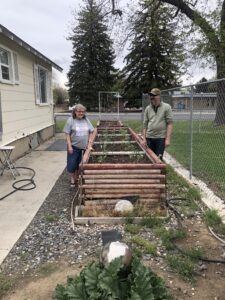
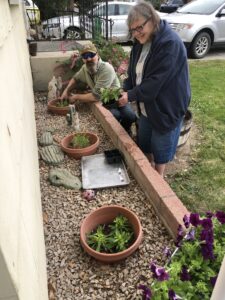
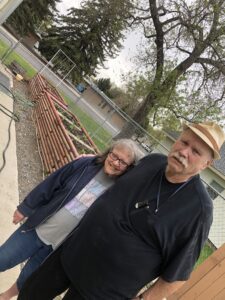 backs, and the fact that they are beautiful is a definite plus too. Steve stepped in to help Debbie and LJ with their freezer defrost project this past week too. That is a really hard job, and it’s always nice to have an extra set of hands. I know that Debbie and LJ really appreciated it. Steve is just a great guy to have around, and he has been a huge blessing to the Cook family. Today is Steve’s birthday. Happy birthday Steve!! Have a great day!! We love you!!
backs, and the fact that they are beautiful is a definite plus too. Steve stepped in to help Debbie and LJ with their freezer defrost project this past week too. That is a really hard job, and it’s always nice to have an extra set of hands. I know that Debbie and LJ really appreciated it. Steve is just a great guy to have around, and he has been a huge blessing to the Cook family. Today is Steve’s birthday. Happy birthday Steve!! Have a great day!! We love you!!
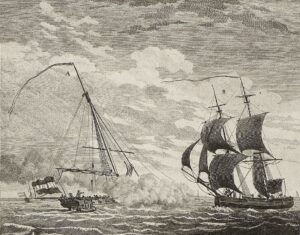 War is often a very strange phenomenon. Some wars go on for years, while others for just one day. On such “war” was the infamous Kettle War. The war was between the Holy Roman Empire and the laughably outmatched Northern Netherlands and took place on October 8, 1784. The war was a one-battle wonder!! The events leading up to the war were a series of political upheavals and rebellions, culminating with the Northern Netherlands seceding from the Empire. That maneuver was one that would cut them off from some pretty important trading harbors. As you can imagine, Emperor Joseph II was none too pleased at this turn of events. In retaliation, he sent three warships to remove the blockade.
War is often a very strange phenomenon. Some wars go on for years, while others for just one day. On such “war” was the infamous Kettle War. The war was between the Holy Roman Empire and the laughably outmatched Northern Netherlands and took place on October 8, 1784. The war was a one-battle wonder!! The events leading up to the war were a series of political upheavals and rebellions, culminating with the Northern Netherlands seceding from the Empire. That maneuver was one that would cut them off from some pretty important trading harbors. As you can imagine, Emperor Joseph II was none too pleased at this turn of events. In retaliation, he sent three warships to remove the blockade.
Strangely, the Northern Netherlands sent only one ship, the Dolfijn. While three warships isn’t that many, it still seems foolhardy to send just one ship to take on three. Maybe it was an odd thing to do, but nothing compared to what was to follow. The battle began with a standoff. Then, the Dolfijn fired a single shot. The bullet hit no one. Strange as that is, what it did hit made the situation even more strange. The bullet hit a kettle of soup on the deck of enemy ship Le Louis. The kettle sprayed its passengers with the thick liquid. To me, that seems like a really bad shot, but that was not how the men on the Le Louis saw the situation very differently. It’s hard to say what might have been going through their minds, but the crew was instantly terrified. It’s not clear whether they were astounded by the accuracy of the shot or terrified of their apparently insane enemies, buy the Empire forces immediately surrendered. Three shiploads of military men surrendered after being missed by a bullet that basically spilled the soup. Explain that to the powers that be.
As a consequence of this short skirmish, and under the mediation of France, negotiations were reopened between the countries. This led in 1785 to the Treaty of Fontainebleau. It was decided that the Scheldt would remain closed to shipping, but that the southern Netherlands would be compensated for this by the Republic. At a rough estimate the Republic paid 2 million guilder (according to other sources 10 million guilder), which equates to 1,099,000 or 5,495,000 US dollars, depending on which estimate is correct. Soon, agreements were made between Belgium and the Netherlands about allowing access the Scheldt. As a result of the war came the decline and fall of Duke Louis Ernest of Brunswick-Lüneburg, who was the advisor to the Dutch stadtholder, who was accused of favoring the enemy due to his familial ties to Joseph. As for Belgium and the Netherlands, at least for now, there was a peaceful agreement on the use of the Scheldt.

 Looking back now, back to a time before the September 11, 2001 attacks, our nation had a very different feel…innocent maybe, but we had no reason to feel a lack of security. Then came that horrific day in September, when innocence was lost. Our nation was attacked…on our own soil, and that was not acceptable!! Of course, there would be retaliation. Those responsible would have to pay, and they did, but we also had to find a way to make sure this could never happen again.
Looking back now, back to a time before the September 11, 2001 attacks, our nation had a very different feel…innocent maybe, but we had no reason to feel a lack of security. Then came that horrific day in September, when innocence was lost. Our nation was attacked…on our own soil, and that was not acceptable!! Of course, there would be retaliation. Those responsible would have to pay, and they did, but we also had to find a way to make sure this could never happen again.
Enter the Office of Homeland Security. Founded on October 8, 2001, less than one month after the September 11th terrorist attacks…the hope was to be able to decipher the chatter that is always out there and if possible, stop any future attacks. While we would all agree that Homeland Security hasn’t done its job in the way we would like, there have been no major attacks on our soil. Any further inaction on their part could cause big problems, so we need to watch and pray over our nation.
Homeland Security is a department of the cabinet. It is the largest department of the federal government, charged with preventing terror attacks, border security, immigrations and customs, disaster relief and prevention and other related tasks. President George W Bush announced the creation of a new office to  “develop and coordinate the implementation of a comprehensive national strategy to secure the United States from terrorist threats or attacks” just ten days after September 11. The new director of the Department of Homeland Security (DHS), Tom Ridge assumed his role as director and the office opened on October 8, 2001.
“develop and coordinate the implementation of a comprehensive national strategy to secure the United States from terrorist threats or attacks” just ten days after September 11. The new director of the Department of Homeland Security (DHS), Tom Ridge assumed his role as director and the office opened on October 8, 2001.
Congress had their concerns about the new department, thinking it would add to the federal bureaucracy and dramatically re-organize the security state. Nevertheless, Congress officially voted to make the office a cabinet-level department in November of 2002. Eventually, 22 other departments were absorbed by DHS. Entities absorbed by DHS included the Secret Service, Customs and Border Protection, and even Coast Guard. The Department of Homeland Security has faced criticism for much of its brief history. It doesn’t really seem to be a very “well-oiled machine” as it were. The response to Hurricane Katrina, for example, was condemned by many, despite having been partly founded to coordinate a government-wide disaster response. Unfortunately, DHS reportedly did not develop such a plan until two days after Katrina made landfall…great timing, since they knew the hurricane was coming.

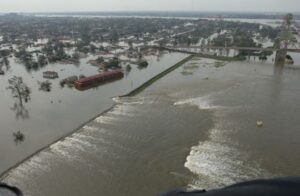
The DHS is inefficient in many ways, but I suppose that any government agency is…especially these days. Nevertheless, one thing can be said for them…up to now anyway. There has not been a major attack on American soil since they were formed. So, provided they continue to do that much, they are better than no security at all.
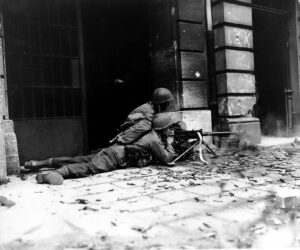
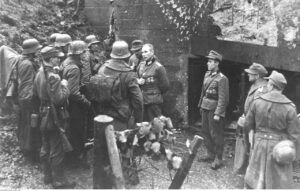 The Nazis were famous for taking no thought for the people around them, as long as they go what they wanted. Achen, Germany was one example of that lack of care and compassion. In October of 1944, the city has been incorporated into the Siegfried Line (known as the Hindenburg Line to the Americans). The Siegfried Line was the main defensive network on Germany’s western border.
The Nazis were famous for taking no thought for the people around them, as long as they go what they wanted. Achen, Germany was one example of that lack of care and compassion. In October of 1944, the city has been incorporated into the Siegfried Line (known as the Hindenburg Line to the Americans). The Siegfried Line was the main defensive network on Germany’s western border.
Fighting around Aachen began as early as the second week of September. It was a period of time known to the Germans as the “First Battle of Aachen.” At that time, the city was defended by the 116th Panzer Division. A panzer division was “a combined arms formation, having both tanks, (German: Panzerkampfwagen, which means armored fighting vehicle, usually shortened to “Panzer”), mechanized and motorized infantry, along with artillery, anti-aircraft and other integrated support elements.” The Panzer Division was under the command of General Gerhard von Schwerin. The proximity of Allied forces made the city officials very nervous, and quickly caused the majority of the city’s government officials to desert their post, long before the evacuation of its citizens was complete. While most of us would be furious over this desertion, Hitler had taken it one step further, by stripping each of the deserting officials of their rank and sending them to the Eastern front as privates. Rather a fitting punishment, but I seriously doubt if Hitler cared about the people. He wanted the officials there for war purposes. Then, in the greatest atrocity, instead of continuing the evacuation, von Schwerin decided to surrender the city to Allied forces. He would have had no idea if the Allies would trat the people kindly or not, but then he really didn’t care. However, on September 13, before he could deliver a letter of capitulation he had written, von Schwerin was ordered to launch a counterattack against American forces penetrating southwest of Aachen. Reluctantly he followed the orders, probably because he fear Hitler more than the Allied forces. He used elements of his panzergrenadier (the motorized infantry) forces. The German general’s Treasonous act when he attempted to surrender the city was irrelevant now, because his letter was never delivered. Unfortunately for him, it fell into the hands of Adolf Hitler, who ordered the general’s immediate arrest. He was replaced by Colonel Gerhard Wilck.
The United States’ VII Corps continued to push German defenses, despite the resistance they encountered on September 12th and 13th. Between September 14 and 16, the US 1st Infantry Division continued its advance in the face of strong defenses and repeated counterattacks, ultimately creating a half-moon arc around the city. Unfortunately, this slow advance came to a halt in late September, due to the supply problem, and the diversion of existing stocks of fuel and ammunition for Operation Market Garden in the Netherlands.
During what would then be known, to the Germans at least, the second Battle of Aachen, American and German forces in and around Aachen, Germany, fought for supremacy between October 2 and 21, 1944. The 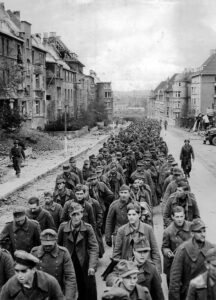
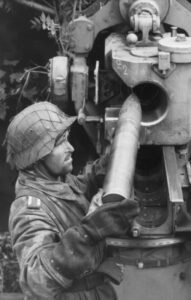 Allies needed the city to advance into the industrialized Ruhr Basin, whether they wanted to fight a battle in the city or not. Although most of Aachen’s civilian population was evacuated before the battle began, much of the city was destroyed and both sides suffered heavy losses. The people would have nothing to come home to. It was one of the largest urban battles fought by US forces in World War II. Aachen was also the first city on German soil to be captured by the Allies. The battle ended with a German surrender, but their tenacious defense significantly disrupted Allied plans for the advance into Germany. The Battle of Aachen had cost both the Americans and Germans dearly; the former suffered over 7,000 casualties, while the latter lost over 5,000 casualties and 5,600 taken prisoner.
Allies needed the city to advance into the industrialized Ruhr Basin, whether they wanted to fight a battle in the city or not. Although most of Aachen’s civilian population was evacuated before the battle began, much of the city was destroyed and both sides suffered heavy losses. The people would have nothing to come home to. It was one of the largest urban battles fought by US forces in World War II. Aachen was also the first city on German soil to be captured by the Allies. The battle ended with a German surrender, but their tenacious defense significantly disrupted Allied plans for the advance into Germany. The Battle of Aachen had cost both the Americans and Germans dearly; the former suffered over 7,000 casualties, while the latter lost over 5,000 casualties and 5,600 taken prisoner.

